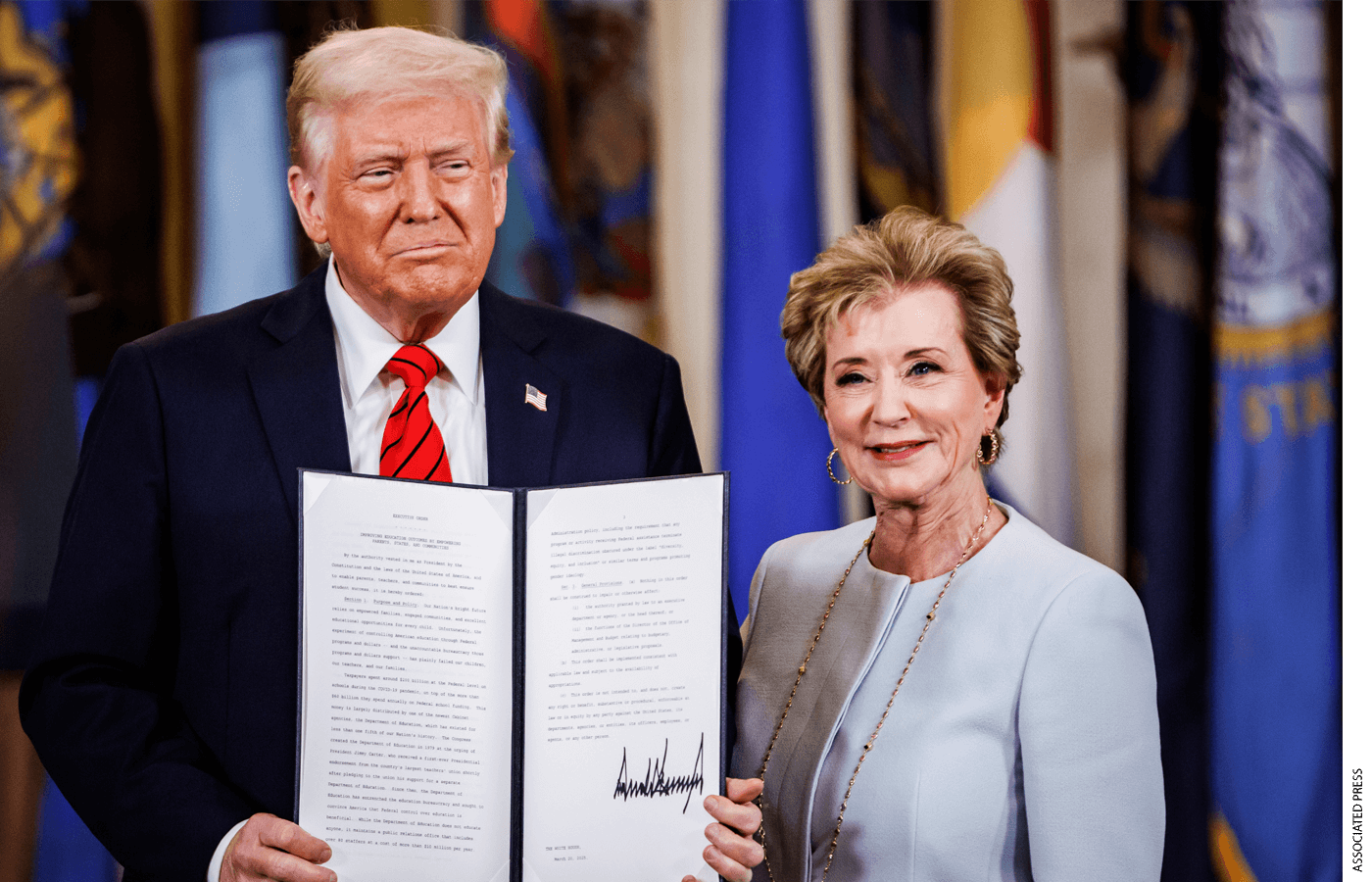Trump Administration Advances Major Effort to Break Up the Department of Education
Trump Administration Advances Major Effort to Break Up the Department of Education
By
Leah Rosenfeld
Last updated:
November 19, 2025
First Published:
November 19, 2025

Photo: Education Next
The Trump administration has taken another major step toward dismantling the U.S. Department of Education, announcing that a wide range of the agency’s responsibilities will be transferred to other federal departments. The move is part of a broader strategy tied to President Donald Trump’s longstanding pledge to reduce the size of the federal government and strip the Education Department of much of its authority.
On Tuesday, senior officials revealed that the administration has formalized agreements with four major federal agencies — including the Departments of Labor, Health and Human Services, and State — to begin managing major programs historically controlled by the Education Department. The transition marks one of the most significant reorganizations of federal education functions since the department was founded in 1979.
What the Restructuring Means
Under the new arrangements, the Department of Labor will take on a larger role in administering federal K-12 initiatives, particularly those tied to workforce development and school-to-career pathways. The State Department will oversee expanded responsibilities related to international education, including a larger share of duties connected to the Fulbright Program and other academic exchange initiatives.
The recent shift follows an executive order Trump signed in March directing federal agencies to prepare for the potential closure of the Education Department. The department currently manages the nation’s $1.6 trillion federal student loan system, distributes billions in aid to low-income students, and enforces civil rights protections in schools nationwide. Although only Congress has the authority to formally abolish the department, the administration appears to be pursuing a structural workaround by reallocating its core duties to other agencies.
Higher education expert Mark Kantrowitz described the move as an effort to “hollow out the U.S. Department of Education, leaving behind a shell of the original organization.” His concerns reflect a growing debate over whether the changes are administrative efficiency or an intentional dismantling of decades of federal education policy.
Earlier this year, the administration cut nearly 50 percent of the department’s workforce, further signaling its plan to minimize the agency’s operations.
Administration’s Justification
Education Secretary Linda McMahon defended the restructuring in an op-ed published in USA Today, arguing that partnering with other federal agencies will “peel back layers of federal bureaucracy” and allow programs to be managed more effectively. She added that the recent government shutdown demonstrated “just how little the Department of Education will be missed,” positioning the shift as part of a measure to streamline federal functions.
The administration has not yet addressed what will happen to the federal student loan portfolio — one of the largest and most complex financial operations within the U.S. government. However, reports surfaced in October that officials are evaluating the possibility of selling part of the $1.6 trillion loan portfolio to private investors, a move that would mark one of the most dramatic changes to federal student lending in decades.
Historical Context and Broader Implications
The Education Department was established in 1979 under President Jimmy Carter after years of debate on how the federal government should support public schools and higher education. Since its creation, the department has faced repeated attempts to downsize or eliminate it. President Ronald Reagan pushed for its abolition in the early 1980s, and Trump previously attempted to merge it with the Labor Department during his first term.
The current restructuring represents the closest the department has come to being dismantled, raising questions about long-term consequences for federal oversight, student protections, and funding systems that millions of families rely on each year.
Popular articles
Subscribe to unlock premium content
The Trend of Renting Time Capsules Rooms Designed to Freeze You in a Past Decade

The Rise of High-End Silent Yoga Classes for Ultra-Focused Mindfulness

Discovering the Stars Above the City Lights

The Trend of Renting Time Capsules Rooms Designed to Freeze You in a Past Decade

The Rise of High-End Silent Yoga Classes for Ultra-Focused Mindfulness

The Trend of Renting Time Capsules Rooms Designed to Freeze You in a Past Decade









